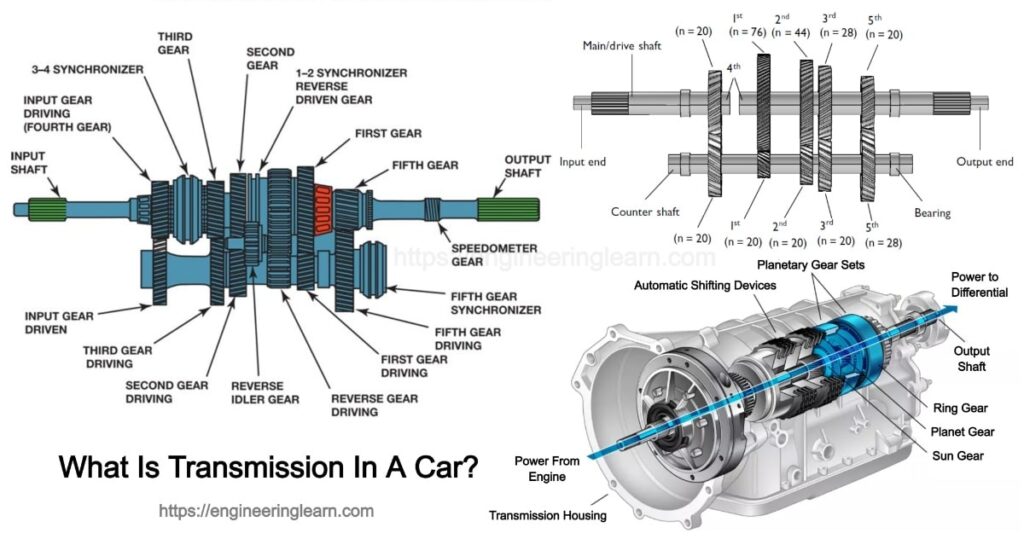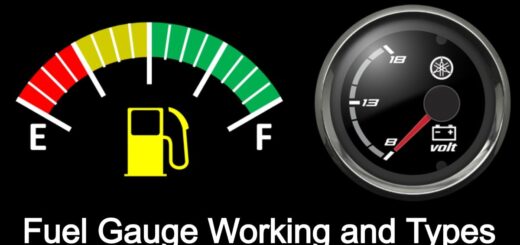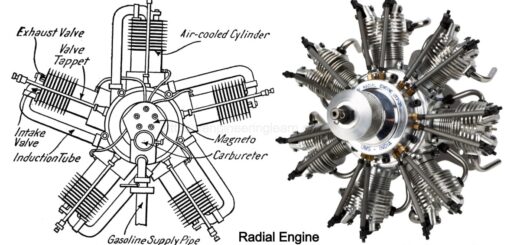What Is Transmission In A Car?

What Is Transmission In A Car? :- A transmission refers to a machine of a power transmission system, which helps in providing the application of power. We all must have heard the term 5-speed transmission which clearly means the gearbox, which uses the gears to provide speed and torque from a circular power source to any other device. The mechanism transmits the power which is developed by the engine of an automobile and is thus referred to as transmission system. This system is composed of following parts such as:
- Clutch
- Gear box
- Propeller shaft
- Universal joints
- Rear axle
- Wheel
- Tires
Need Of A Transmission System
The transmission system is required to provide a means of connection and disconnection with rest of the system without undergoing any shock i.e. quite smoothly. Here are some of the more points which clear the need of a transmission system.
- The system provides a varying leverage within the engine and the drive wheel.
- The transmission system also provides the transfer of power in the opposite direction.
- The system enables transmission of power at various angles and various dimensions.
- It enables reduction of speed amongst the engine and the drive wheels in a specific ratio of 5:1.
- The system enables diversion of flow of power at 90 degree.
- The system provides different speeds which can be switched according to the requirement.
- The foremost need of the system is to bear the reaction of torque, driving thrust and braking effect.
Fluid Coupling
Fluid Coupling :- Fluid coupling is a hydraulic transmission system which uses a hydrodynamic device to transmit the circular mechanical power. The system is used in the automobile transmissions which acts as an alternative of a mechanical clutch.
Construction Of A Fluid Coupling
Fluid coupling includes of a pump which is commonly known as an impeller and the turbine is commonly known as the rotor which are enclosed suitably in a casing. The rotor and the impeller is connected properly to the prime mover whereas the rotor has a shaft which is bolted to it. This bolted shaft is also connected to the machine which is driven through a suitable arrangement. The Oil is filled in the fluid coupling by the filling plug which is provided to its body.
Operating Principle of Fluid Coupling
The impeller and the rotor are connected to each other whereas there is no mechanical interconnection found in between both of them and the power is transmitted by the fluid which is filled inside the coupling. Once the impeller is rotated by the prime mover, it imparts the velocity and energy of the fluid, which gets converted into the mechanical energy from the rotor in order to rotate it.
The fluid is flowed through a closed circuit from the impeller to the rotor through the air gap which is at the outer periphery and also from the rotor to impeller which is again through the air gap present at the inner periphery. It is essential to keep a difference in the heat between the impeller and the rotor in order to enable the fluid to flow and thus make an essential difference in the R.P.M. which is known as slip between both. More the slip increases, more fluid gets transferred and also higher torque is transmitted.
Torque Converter
Torque converter is a type of a hydraulic transmission which is used to increase the torque of the vehicle by reducing its speed. This system provides a continuous variation. The most important function of a torque converter is to multiply the torque when there is a variation within the input and output of the rotational speed, thus providing a reduction of gear. The cars with an automatic transmission do not have clutch which is responsible for disconnecting the transmission from the engine. The device used in such cars is a torque converter.
What Does The Torque Converter?
There are four most essential components which are present inside a torque converter:
- Pump
- Turbine
- Stator
- Transmission fluid
The torque converter is screwed to the flywheel of the engine, so that it can take a turn at any required running speed of the engine.The pump which is present inside a torque converter is a perfect example of a centrifugal pump as it spins the fluid flungs outside after this a vacuum is created which draws higher fluid at the center. After this the fluid enters the blades of the turbine, which is kept connected to the transmission.
If you wish to change the direction of any moving object then it is suggested to apply an external force to that object which does not matter whether the object is a car or any other automobile. Whoever applies the force it causes the object to turn which shall also feel the force which is applied in the opposite direction.
So as it is clear by now that the turbine is responsible for changing the direction of the fluid, it lets the turbine to spin.
Automatic Transmission
An Automatic transmission system is one of the most advanced system which is designed to reduce the mechanical efforts and gear according to the different speed is obtained automatically. This system is also termed as hydramatic transmission which contains an arrangement of gear in the form of an epicycle, fluid coupling and torque converter. In this type of transmission the gears are set in a series to provide quick transmission, automatically. Mostly these type of transmission are used by car companies like Skoda, Toyota, Lexus, etc.
Manual Transmission
Manual transmission is a type of transmission in which the driver has to manually select the gear according to the variation in the speed:
This system includes a clutch. The clutch is disengaged completely whenever the pedal is depressed wholly. No torque shall be transferred from the engine to the wheels. Pressing the clutch fully helps the driver to change the gears according to the speed of the vehicle. The clutch slip refers to a point which varies amongst completely depressed and wholly released clutch. ( What Is Transmission In A Car? )








